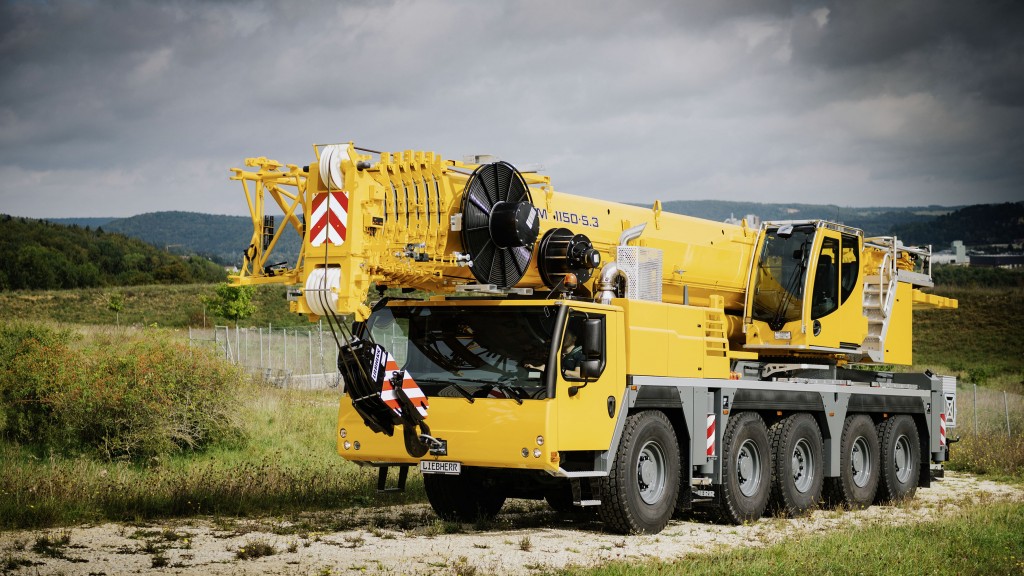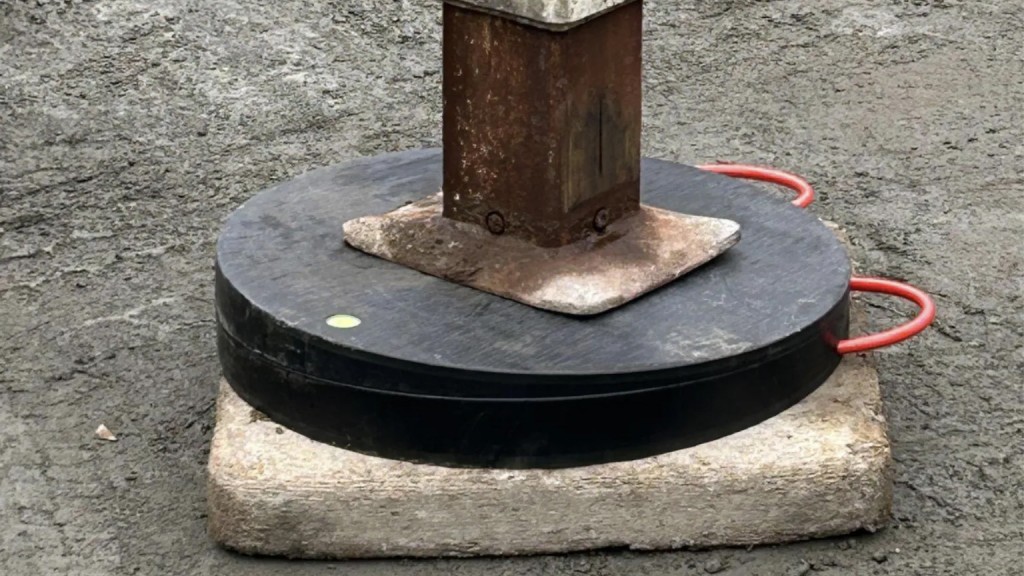
After manufacturing around 1500 units, Liebherr has now unveiled the successor to its successful LTM 1130-5.1 - the LTM 1150-5.3.
With a maximum lifting capacity of 150 tonnes and a 66 metre telescopic boom, it is also an effective addition to Liebherr's crane range below the 180 tonne LTM 1160-5.2.
The 10 percent longer telescopic boom compared to its predecessor will hoist on average 15 percent higher loads with both maximum and part ballast. And with this in mind, the Liebherr engineers have produced a minor miracle - the new crane has the same low gross weight as its predecessor. With an axle load of twelve tonnes, the crane can carry nine tonnes of ballast on public roads.
After the LTM 1120-4.1 in March, Liebherr has now unveiled the second new development in its all-terrain crane range this year - the LTM 1150-5.3. Christoph Kleiner, sales director, says, "It has the longest boom in this crane class at 66 metres and can compete with crane models in the 200 tonne lifting capacity class. It delivers outstanding lifting capacities when fully raised and at large radii. And it is immediately ready for use once it reaches the site. This is because the new 150 tonne crane carries nine tonnes of a ballast with a gross weight of 60 tonnes. That means it can complete lots of jobs without requiring additional ballast transport vehicles. That saves time and money, and makes the crane even more valuable to crane contractors."
Compared to its predecessor, the telescopic boom on the new LTM 1150-5.3 is six metres longer. At the same length of 60 metres, the new 5-axle crane can hoist 12 tonnes when fully raised - 1.5 tonnes more than its predecessor. When fully extended to 66 metres, the new crane has a lifting capacity of over 9 tonnes. That makes it perfect for erecting tower cranes and radio masts.
Lattice extensions enables the new 150-tonne crane to achieve hook heights of up to 92 metres and radii of up to 72 metres. For this, one 7 metre lattice section as boom extension and a 10.8 to 19 metre double folding jib are used. The latter can be adjusted hydraulically between 0° and 40°. A 2.9 metre erection jib and a runner, which can be swung to the side, round off the equipment list. Particularly economical - the lattice jibs are compatible for many crane models in the 100 to 180 tonne class within the Liebherr portfolio.
The time-tested six-cylinder Liebherr diesel engine in the undercarriage provides all the drive power the LTM 1150-5.3 needs. It develops 400 kW / 544 bhp and a torque of a 2516 Nm. The engine satisfies the new stage V emissions directive and can also be configured to comply with the regulations which apply in countries outside of Europe, for example Tier 4 for the USA or stage IIIA for low regulated countries.
The ZF-TraXon gearbox is used to transfer the power to the crane's axles. ECOdrive is particularly economical - the additional eco mode delivers enhanced drive properties which save fuel and reduce both noise and CO2 emissions. In addition, Hillstart Aid makes starting on gradients easier.
Liebherr has continued its single-engine strategy on this crane with a mechanical drive unit for the superstructure. The weight reduction created by the elimination of the superstructure engine from the previous model is used to deliver a longer boom and more lifting capacity.
In keeping with the latest developments from the Liebherr mobile crane series, the new 150 tonne crane also features ECOmode for crane operations to reduce fuel consumption and emissions of both noise and CO2. Firstly, the complete pump drive can be disconnected automatically when the engine is idling and then reconnected by the intelligent controller in a matter of seconds when it is required. And secondly, the crane controller automatically calculates the perfect engine speed for the working speed selected using the control lever to avoid unnecessarily high engine speeds.
Hook blocks have to be heavy to ensure that the hoisting winch spools reliably. However, they should be as light as possible for being transported on the crane and for high net loads during hoists. Liebherr has designed a completely new range of hook blocks to satisfy these contradictory requirements - weight plates are attached to both sides of the hook block to change the weight of the block so that it is perfect for the current situation. Christoph Kleiner explains: "Our engineers have produced a simple, but brilliant design as it means that operators can react even more flexibly to every job."
For example, a 3-roller hook block, which previously has weighed 700 kg in this crane class, now only weighs 500 kg, but can be upgraded to 700 kg quickly and easily when necessary. The new system is available for 1 to 7-roller hook blocks. These can be used on cranes with both 19 mm and 21 mm ropes. The weights can be interchanged to ensure simple handling.
Company info
1015 Sutton Drive
Burlington, ON
CA, L7L 5Z8
Website:
liebherr.com/en/can/about-liebherr/liebherr-worldwide/canada/liebherr-in-canada.html



